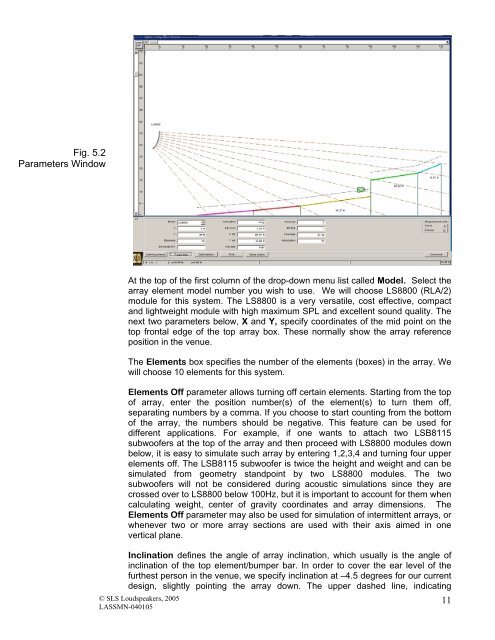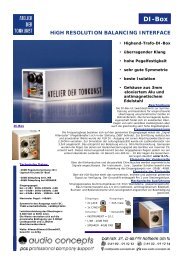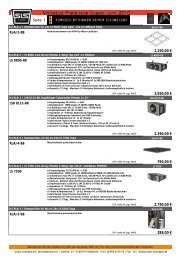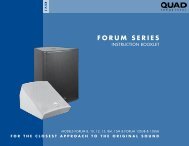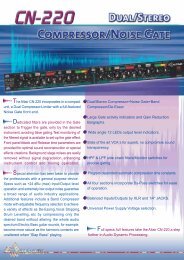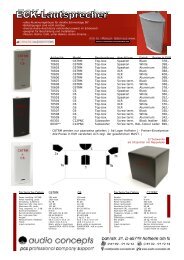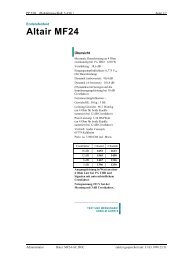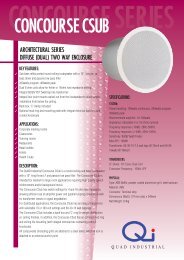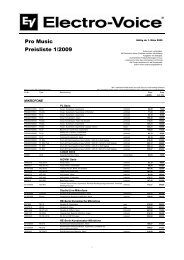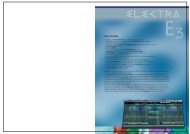LASS user manual - audio concepts
LASS user manual - audio concepts
LASS user manual - audio concepts
Create successful ePaper yourself
Turn your PDF publications into a flip-book with our unique Google optimized e-Paper software.
Fig. 5.2<br />
Parameters Window<br />
At the top of the first column of the drop-down menu list called Model. Select the<br />
array element model number you wish to use. We will choose LS8800 (RLA/2)<br />
module for this system. The LS8800 is a very versatile, cost effective, compact<br />
and lightweight module with high maximum SPL and excellent sound quality. The<br />
next two parameters below, X and Y, specify coordinates of the mid point on the<br />
top frontal edge of the top array box. These normally show the array reference<br />
position in the venue.<br />
The Elements box specifies the number of the elements (boxes) in the array. We<br />
will choose 10 elements for this system.<br />
Elements Off parameter allows turning off certain elements. Starting from the top<br />
of array, enter the position number(s) of the element(s) to turn them off,<br />
separating numbers by a comma. If you choose to start counting from the bottom<br />
of the array, the numbers should be negative. This feature can be used for<br />
different applications. For example, if one wants to attach two LSB8115<br />
subwoofers at the top of the array and then proceed with LS8800 modules down<br />
below, it is easy to simulate such array by entering 1,2,3,4 and turning four upper<br />
elements off. The LSB8115 subwoofer is twice the height and weight and can be<br />
simulated from geometry standpoint by two LS8800 modules. The two<br />
subwoofers will not be considered during acoustic simulations since they are<br />
crossed over to LS8800 below 100Hz, but it is important to account for them when<br />
calculating weight, center of gravity coordinates and array dimensions. The<br />
Elements Off parameter may also be used for simulation of intermittent arrays, or<br />
whenever two or more array sections are used with their axis aimed in one<br />
vertical plane.<br />
Inclination defines the angle of array inclination, which usually is the angle of<br />
inclination of the top element/bumper bar. In order to cover the ear level of the<br />
furthest person in the venue, we specify inclination at –4.5 degrees for our current<br />
design, slightly pointing the array down. The upper dashed line, indicating<br />
© SLS Loudspeakers, 2005<br />
<strong>LASS</strong>MN-040105<br />
11


